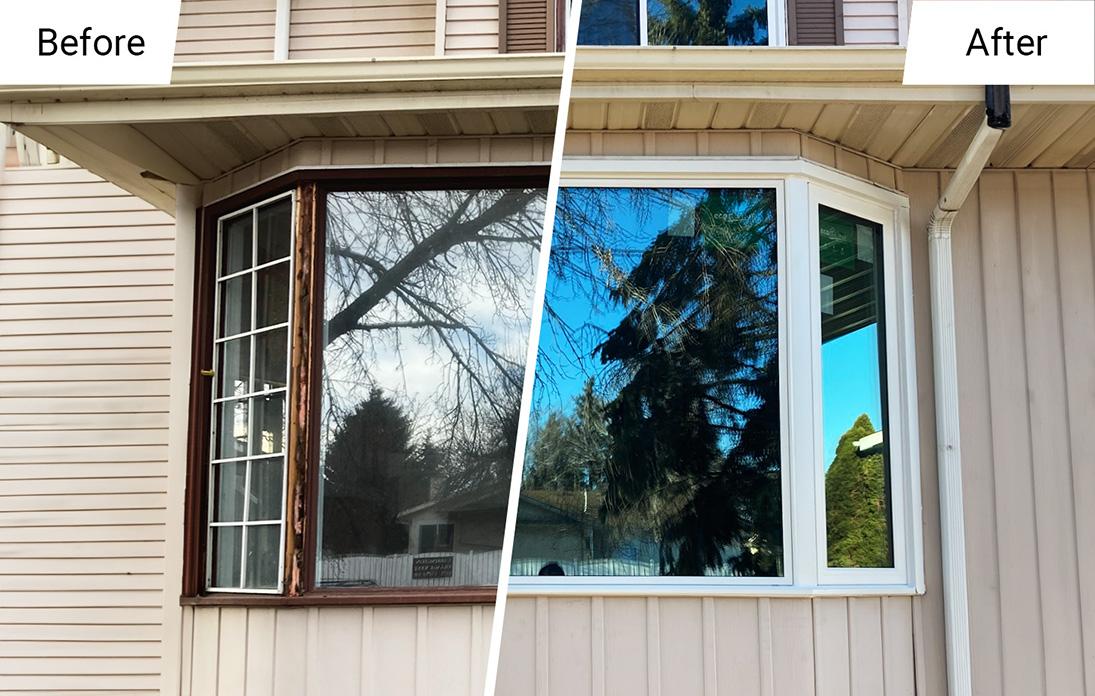

Windows and Doors Store vs. Supply and Install Company: What’s Better?
Sep 20, 2024
6 min read
905
Whether you are planning a window or door replacement, or really, any type of renovation in your home, you have probably faced this dilemma before:
- Do you go with a well know renovation store like Home Depot or Rona, or do you trust a less known, smaller company that specialises in one thing?
Traditionally, big stores have the appeal of their reputation. Many homeowners simply think that if they go with a well-known brand or store, they will be better taken care of.
But when it comes to window replacement, history shows that big window and door stores aren’t always the best option for the longevity and performance of your windows. So let’s find out what is better for your home improvement project – stock or custom windows and doors? Big box stores or a specialised local company?
Custom vs. Stock Windows & Doors: What’s Better for Your Replacement Project?
When upgrading your home’s windows, deciding between custom-made or stock windows is crucial. Homeowners won’t find custom, energy-efficient window options in big-box stores, as they typically offer stock windows with limited features.
If you want windows tailored to your specific needs – such as enhanced energy efficiency, unique styles, or custom finishes – the best option is to go with a local, reliable company specialising in custom window solutions.
| Feature | Custom Windows and Doors | Stock or Mass-produced Windows and Doors |
| 📦 Availability | Made to order, tailored to your home, at least 6 weeks wait | Readily available in-store |
| ☀️ Energy-Efficiency | High-efficiency glass, gas fills, coatings | Limited efficiency options |
| 🎨 Customisation | Fully customisable: size, colour, finishes | Fixed sizes and limited colour options (usually white only) |
| 🌟 Fit & Performance | Perfect fit, designed for your home’s specs | May require adjustments, generic fit |
| ✅ Design Flexibility | Choose from a variety of styles, shapes | Pre-determined styles and designs |
| 📈 Long-Term Value | Superior durability, increased home value | Moderate durability, poor ROI |
| 💪 Warranty & Support | Min 20-Year extensive warranty | Standard warranties, minimal support |
| 💰 Cost | Higher prices | Affordable |
| 💰 Grants and Loans | Eligible for government grants and loans | No grants or loans |
When Should You Go with a Window and Door Store?
Bigger window and door stores, or home renovation stores like Home Depot, Rona, or Lowe’s usually have a bigger selection of products because they work with several manufacturers.
Big box stores also have an advantage because they carry renovation options for your whole home. If you are doing a big overhaul you may find it convenient to shop for flooring, kitchens, and windows in the same place. Especially if you are after cheaper windows and doors and do not require a lot of energy-efficiency or custom features.
Does a window & door store offer better warranty?
One reason homeowners often end up going with a big window and door store or a big company, is because of the trustworthiness of their warranty. But if you decide on a legitimate smaller supply and install company, their warranty will be much more specific, extensive and easier to claim, with the best window companies offer a 25-years warranty on both product and labour!
Most bigger window and door stores still require you to turn directly to the manufacturer in the event you need service or have a warranty concern. The company that made your order is then responsible for sending their own technicians to check out and rectify any work that was done incorrectly.
Although it is somewhat of an established norm, this way of dealing with services often results in finger-pointing and delays as you have to go through numerous people just to get someone to your home to take a look at the problem.
When Should You Go with a “Supply and Install” Window Company?
Good supply and install companies usually either manufacture their own windows, or have a committed involvement with their production line. If the company actually cares about delivering quality windows, they will be able to provide all the window performance ratings and certifications.
Most supply and install companies also take a “full-service” approach. This means that the same installer will measure your windows, perform the installation, and be responsible for completing any service work if a problem arises with your windows.
While they may not always have the reputation of big box stores, smaller supply and install companies actually end up being easier to deal with for most homeowners. Of course no two companies are the same, but a respectable and trustworthy window company will have the same or better warranty as Home Depot, will offer windows of same or better quality, and most likely be more attentive to your needs as a customer throughout the replacement process.

All in all, a specialised window and door company is your best option when you want a complete transformation of your home, significantly increasing its overall value, comfort and energy-efficiency. Installing new energy-efficient windows is a long-term investment, helping you to save on annual energy bills, claim government loans and grant and ensure peace of mind for your family for many years to come.
About Ecoline Windows Canada
At Ecoline Windows we strive to deliver our customers the best in window quality, professional installation, and personalised service. Our windows are ENERGY STAR rated and CSA certified. Our window professionals specialise in full-frame replacements and are able to address any issues in the structure around your opening, and ensure your new windows are installed with an airtight seal.
We understand that when it comes to problems with their new windows, most customers aren’t upset about window quality or installation, they are usually most dissatisfied with the amount of time it takes to get a service or a warranty appointment. That is why we created a dedicated service department to answer any questions you have and process your concerns efficiently and correctly.
1750 Coast Meridian Rd #102,
Port Coquitlam, BC V3C 6R8
100, 17866 106A Avenue,
Edmonton, AB, Canada,
T5S 1V3
3307 Dunmore Rd SE #12,
Medicine Hat, AB,
Canada, T1B 3R2
2081 Merivale Rd #201, Ottawa, ON, Canada, K2G 1G9
by appointment only
109 Ilsley Ave Unit #3, Dartmouth,
NS, Canada, B3B 1S8








